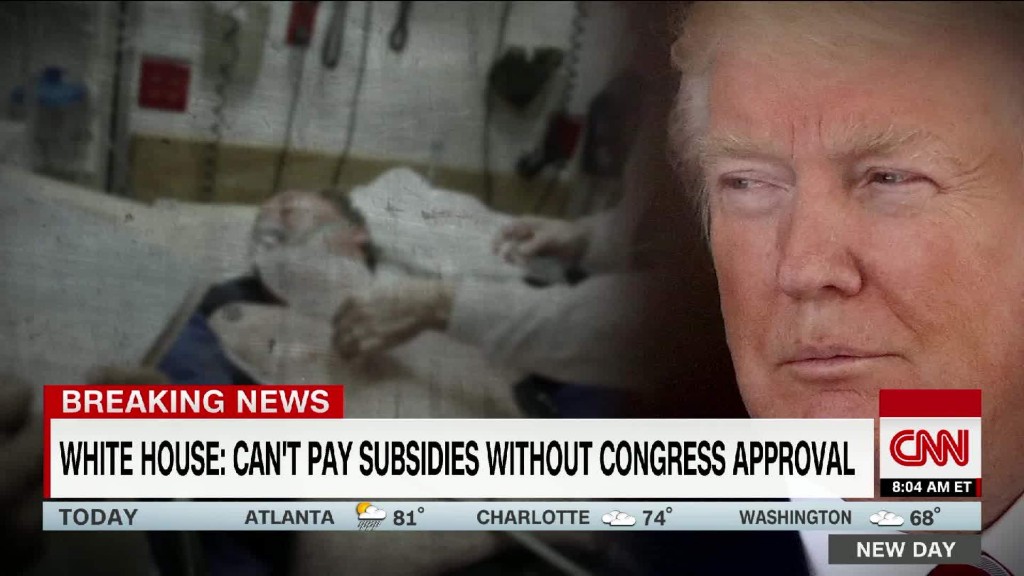
Despite the Trump administration's repeated attacks on Obamacare, millions of Americans opted to sign up for coverage on the exchanges for 2018 anyway.
Some 11.8 million people selected plans on the federal and state-based exchanges, down 3.7% from last year, according to the National Academy for State Health Policy. The data, released Wednesday, provides the first look at sign-ups for 2018 nationwide.
Just over 8.7 million people signed up on the federal exchange, while a little over 3 million picked plans in the 11 states and District of Columbia, which run their own marketplaces.
Obamacare advocates had feared that sign-ups would plummet after the Trump administration cut the open enrollment period in half, slashed advertising by 90% and reduced support for enrollment assistance. Also, insurers hiked premiums for many plans amid the uncertainty in Washington, D.C. and President Trump's elimination of funding for Obamacare's cost-sharing subsidies. However, in a strange twist, richer federal premium subsidies actually made coverage more affordable for many people.
Related: 8 ways Trump hurt Obamacare in his first year
The modest dip in sign-ups shows the importance of the Affordable Care Act to consumers, advocates argue.
The academy's figures provide the initial evaluation of how enrollment fared in the state-based exchanges, which have more control over their outreach efforts and enrollment schedules. Several states extended their season into January, with California and New York allowing people to select plans until the end of the month.
Sign-ups fell 5.3% in the 34 states that leave enrollment entirely to the federal exchange, healthcare.gov. But it remained essentially flat in the 12 state-based marketplaces and in the five states that have their own exchanges, but outsource the enrollment process to healthcare.gov.
The Centers for Medicare and Medicaid Services is expected to release its comprehensive review of 2018's open enrollment period in coming weeks. Enrollment isn't final until consumers pay their first month's premium.
Related: Mike Pence's home state can now require Medicaid recipients to work
Several state exchange directors said Wednesday that their robust marketing and outreach efforts helped to keep sign-ups even or ahead of last year's. The standouts included Rhode Island, which saw a 12.1% increase, and Washington, which had 7.7% more people pick plans.
Only four states -- California, Idaho, Maryland and Vermont -- saw sign-ups slip.
Peter Lee, executive director of the Covered California exchange, said one reason why its numbers fell 2.3% is because it encouraged residents who don't qualify for premium subsidies to buy coverage off the exchange, where rates were cheaper for some plans. He highlighted that nearly 390,000 new consumers signed up for coverage, an increase of 5% over the prior year.
Related: Millions more Americans were uninsured in 2017
While the state exchange directors said Obamacare remained strong this year, they were concerned about Congress' elimination of the individual mandate starting in 2019. A central pillar of the health reform law, the mandate requires nearly all Americans to get coverage or pay a penalty.
"While we've seen remarkable stability in 2018, 2019 looks very troubling," Lee said, noting that premiums could rise by 30% in some states.
While Republicans in Congress have largely moved away from trying to repeal and replace Obamacare after their efforts failed last year, the Trump administration continues to chip away at the law. It is in the process of relaxing federal regulations to allow the sale of more insurance policies that don't adhere to Obamacare's mandates, for instance.


